
Ivan Cervantes is widely considered an enduro legend. Somehow this description seems limitative for the motorcycle renaissance man that he is. Cervantes is a four-time enduro world champion, SuperEnduro world champion, Guinness World Record holder, Dakar finisher, adventure bike winner turned Triumph test rider. We sat down with “El Torito” for a wide-ranging fascinating conversation.
He’s the first ever Spanish enduro world champion, first ever Spanish “ISDE” scratch winner, he rode the brand new KTM EXC-F 250 the E1 world title in 2005 and played a crucial role in the development of the highly acclaimed Triumph TF 250-X MX bike. Taking on new challenges has clearly never fazed the 42-year old Spaniard.
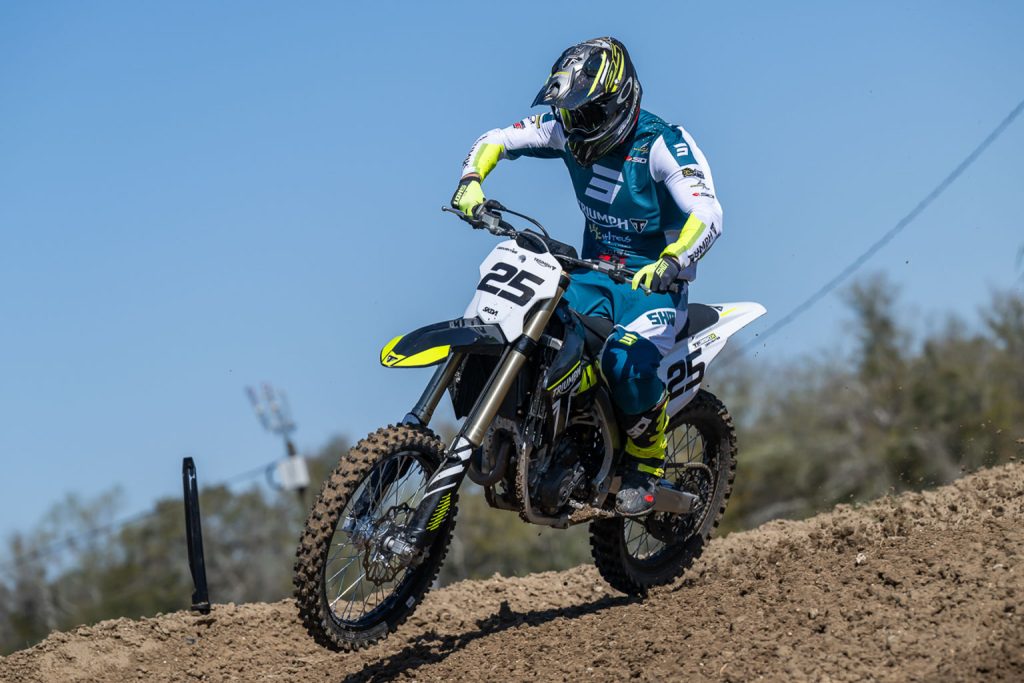
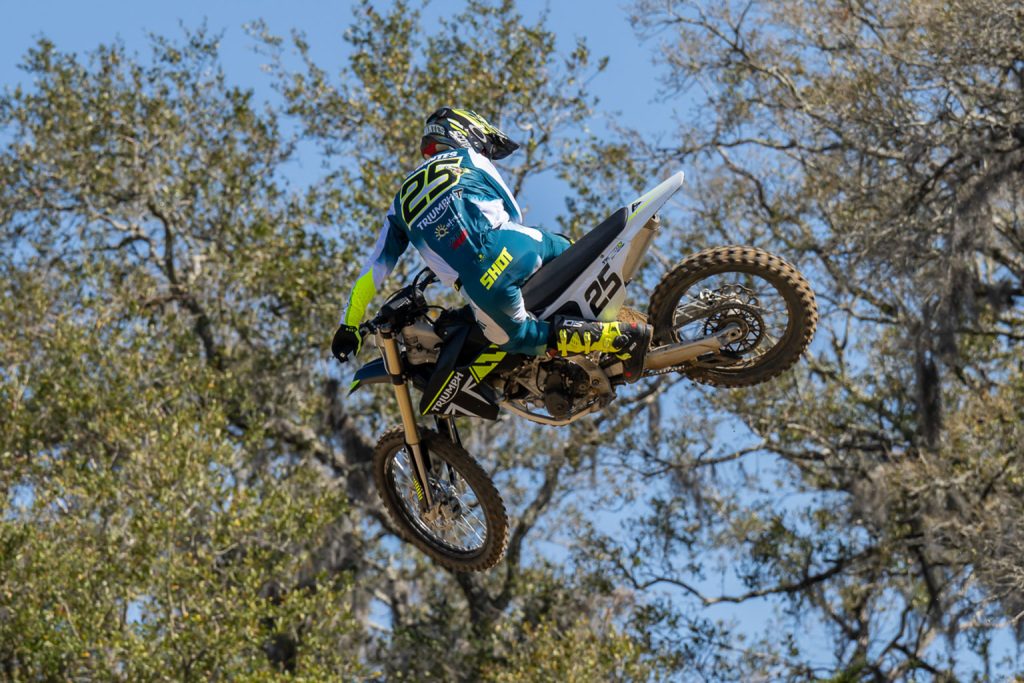
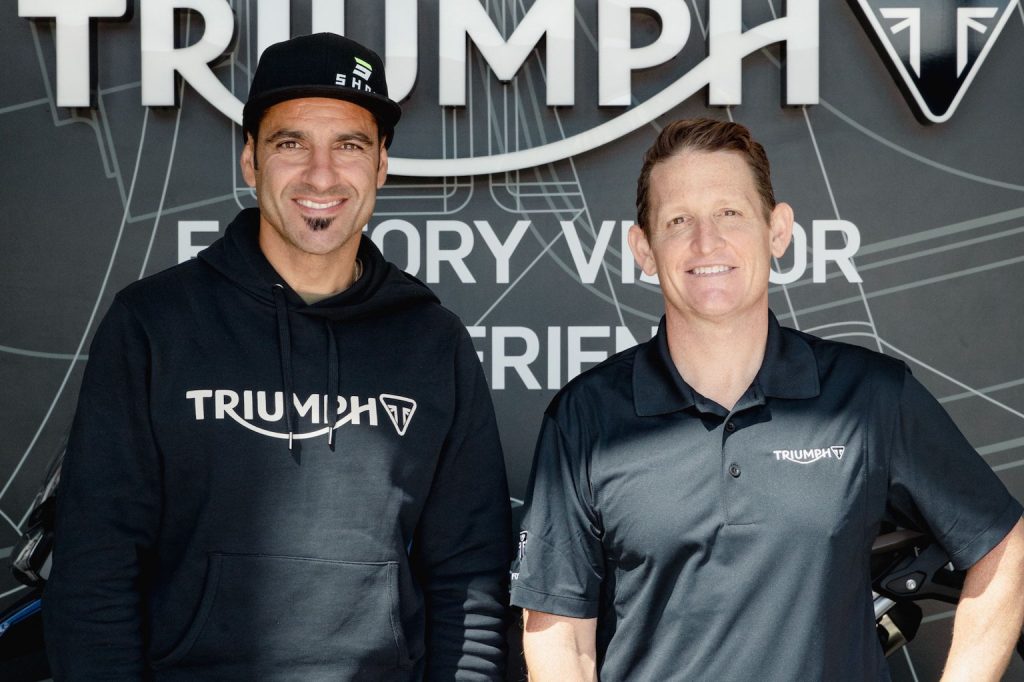



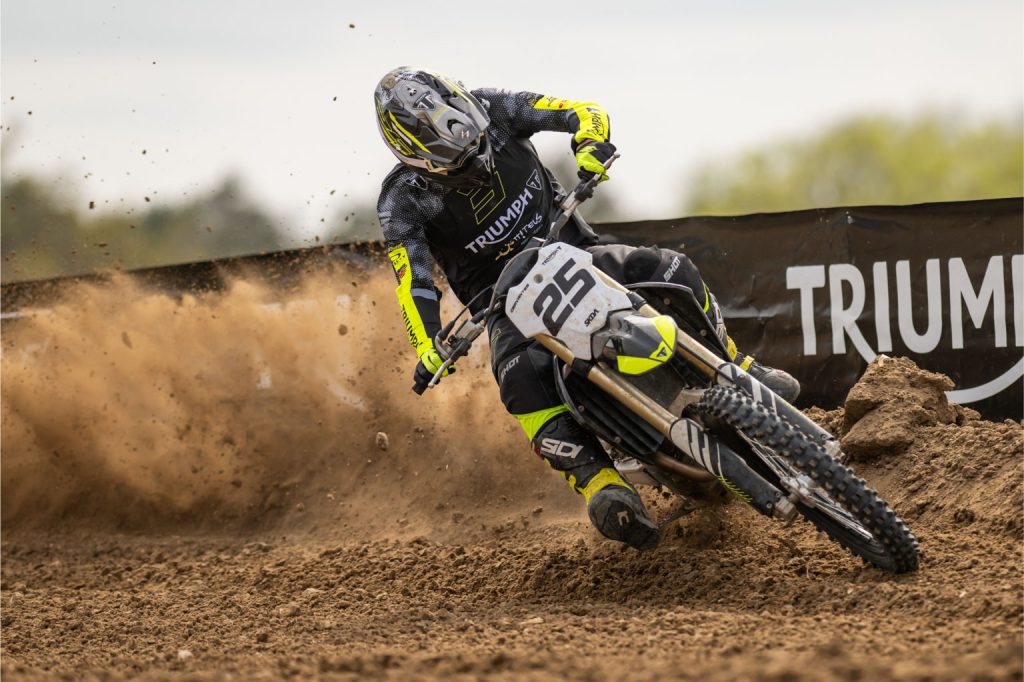
It must give a lot of satisfaction to see how well Triumph’s MX2 bike is performing and to see the glowing reception by the media?
Ivan Cervantes: “It’s really amazing! My first conversation about this project was at the end of 2019 so it’s been a long journey. But I’m very grateful to be involved with such a once in a lifetime opportunity. I feel like living my second youth because I’ve been riding so much and it allowed me to get back to a really good level in motocross. I’m convinced that the Triumph TF 250-X is one of the best bikes in the MX2 class at this moment.”
What was it like to witness how Triumph immediately rose to the occasion with the podium of Mikkel Haarup in Argentina, the speed that Jalek Swoll showed in Monster Energy Supercross?
Cervantes: “Wow, it was an unbelievable moment to see how Mikkel made the podium at the very first GP Triumph participated in. He also took the holeshot in the second moto. It was a huge statement for Triumph and a major achievement! I think that’s an historic feat for any manufacturer, to claim a podium in your very first race in such a competitive series. It gives me goosebumps talking about it actually. We spent so much time and effort to build the best bike possible. That bike has some of my DNA in it! The emotions from Argentina only compare to the public reveal of the bike at the LA Coliseum during the SMX World Championship Final. To see Ricky Carmichael and Jeff Stanton enter the stadium that night was unreal.”
So to break things down, what exactly is your role as a test rider?
Cervantes: “Well, I get to try all different iterations of the bike during the development process. Riding with different chassis, different engines and suspension. I also tried different options for brake pumps, different exhausts, wheels and sprockets. Basically anything that you can try. You really to concentrate on the feeling with the bike, mostly in blocks of 10 laps for each specific demand from the engineers. With that you focus on the right words to explain as precise as possible what you experience. Only exceptionally, like on an in or outlap would we race each other a little! Anyway, it was a hard job because Triumph decided to take the long way so to speak. Not by ‘shopping’ around to buy the chassis from this manufacturer and the engine from another. Triumph chose to design everything themselves and even produce a lot of the parts in-house. So sometimes we needed to go two steps back and decide that a certain part didn’t work they way the engineers hoped it would.”
Of course the development of such a huge project is a team effort. Also from a test rider perspective. What did you think about partnering with Ricky Carmichael, probably the best supercross and motocross rider ever?
Cervantes: “When Ian Kimber, the Triumph project leader for motocross, told me that they hired Ricky I was speechless. First of all it was clear that RC would bring so much knowledge and experience with him from his background at three motorcycle giants: Suzuki, Honda and Kawasaki. And there’s of course his level of riding and the reputation that he built. When Ricky offered his opinions at times I didn’t always immediately see what he was getting at until his remarks sank in. And he was always spot on! Really amazing to witness. From a personal point of view it was a dream coming true because I had Carmichael posters in my dad’s garage when I was growing up! Secondly Triumph established a killer crew of test riders. Because they also brought on Clément Desalle and Ivan Tedesco. One of the most remarkable things that happened was that all four of us were always united in our opinions on all of the major decisions. There was not one who said we should go like this and another who wanted a completely different direction.”
How did you get into motocross?
Cervantes: “My dad was a motorcycle enthusiast with a big passion for anything two wheels. He was especially interested in GP racing so when I was a toddler he took me to tracks like Montmeló and Valencia to watch the races. I told him that the bikes were okay but I preferred tyres with knobs. Don’t ask me where that came from! Like many kids I received a 50cc motocross bike for Christmas and that was the beginning. At first I sucked really bad to be honest. My dad never pushed me but he encouraged me. Step by step my confidence grew so I started winning some local races. When you’re seven it’s pretty cool to go to class with last weekend’s trophy in your school bag!”
You sort of stumbled upon the world of enduro I understand?
Cervantes: “That’s true actually! I was making headway in motocross when things got a bit more serious in 80cc. I won the Spanish title and finished third in the European Championship. I did quite well on the bigger bikes too. I won the Spanish 125cc SX title in 1999 and finished second in 250cc the year after. In 2001 I had the opportunity to go to the 125cc World championship with a team that was organised by the Spanish motorcycle federation on TM bikes. That was a huge step for me, because I did the complete series for the first time. Only the first 15 riders scored points so things were harder in that regard. I remember that Namur in Belgium was my best race!”
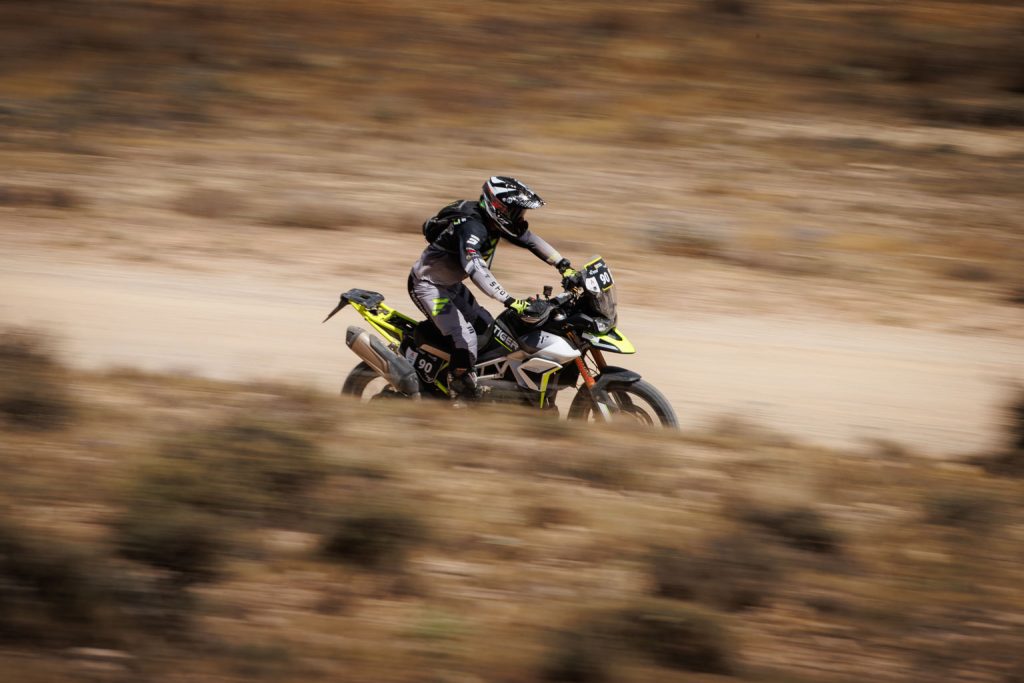
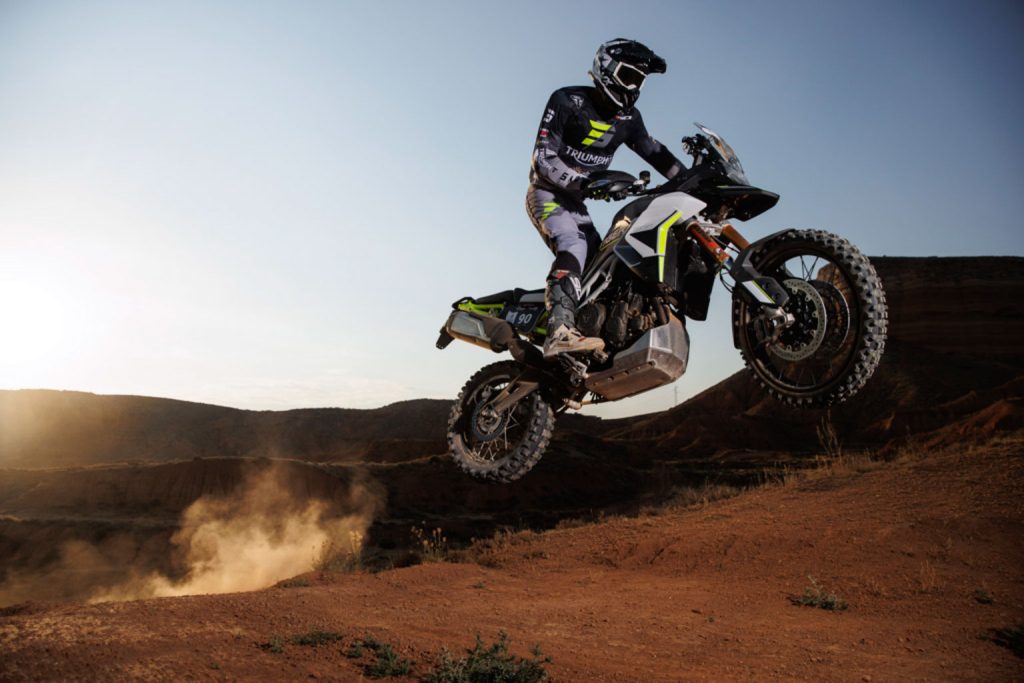
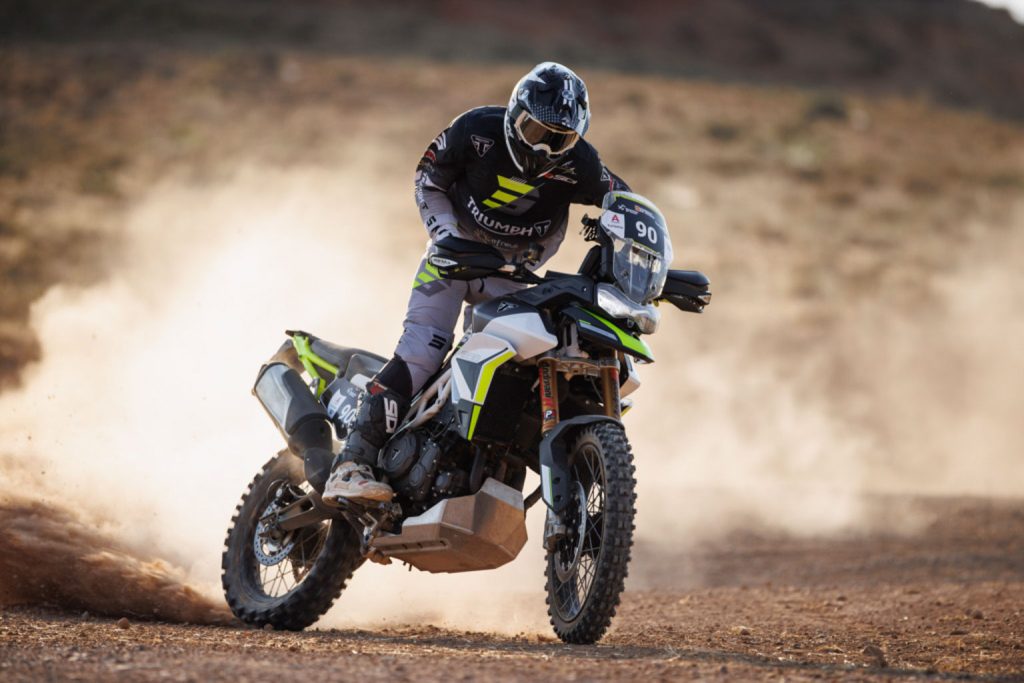
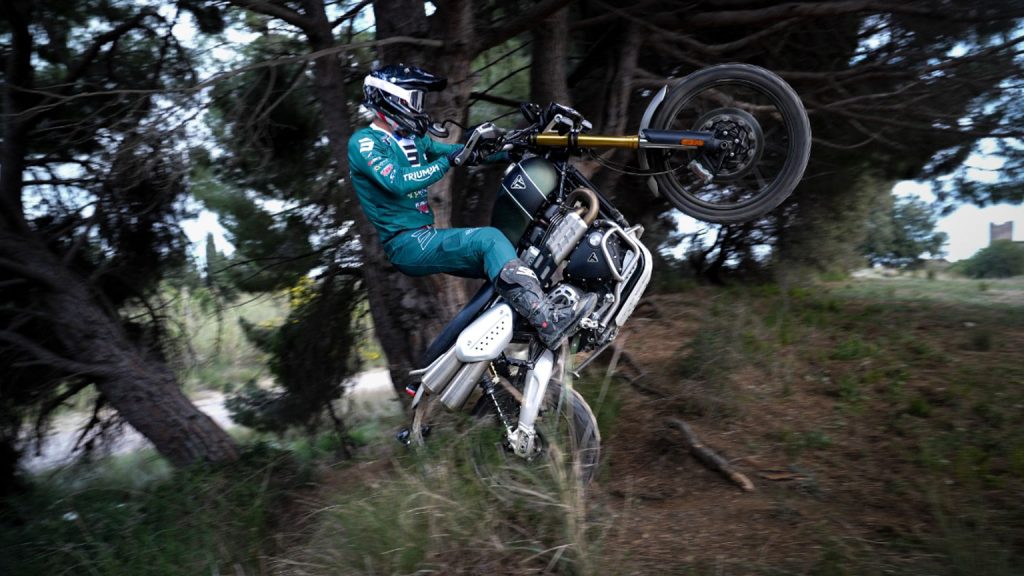

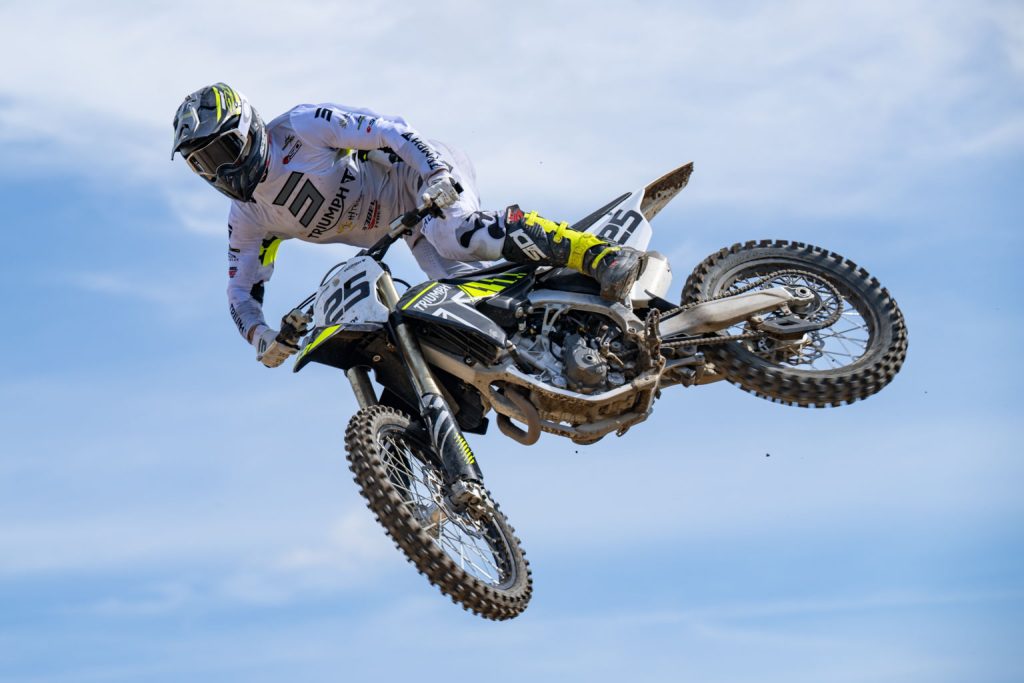
That was probably the most enduro-like motocross GP ever!
Cervantes: “At that point I still didn’t know anything about enduro. As a matter of fact back then enduro was the ugly duckling of motorcycle racing in Spain! For 2002 I had jumped from 125cc straight to the 500cc world championship. I rode for KTM Spain on the big 540SX bike, the same bike as Joel Smets, which was a beast for a 20-year old! I had started the season strong in Valkenswaard but injured both shoulders at the next GP in Bellpuig. At a check up with my doctor he advised me to do some enduro riding on easy-going terrain before jumping back on the motocross bike. That’s how I got started, just having fun with some friends. KTM learned about this and reached out to me about replacing Kari Tiainen who was a 7-time world champion at that point. We made a plan to do the last two world championship rounds although I was hesitant at first. How was I to replace the biggest enduro legend of that time after a few months of getting into it for fun?”
And as they say the rest is history?
Cervantes: “I’m not sure why I adapted so quickly to enduro but I always had good speed in motocross. Over one lap of qualifying I was up there, much higher than I would finish in the race. I think that’s something KTM picked up on. Before going to my first enduro world championship race I did a “test race” in Spain where I beat Juha Salminen, Anders Eriksson and a few other high-level enduro riders. I had no clue what I was doing yet, but I knew I was onto something and decided to pursue in enduro. My first EnduroGP was in Finland and it was so tough: muddy, tree roots everywhere, very technical. In my first special test I crashed 4, 5 times. In one special! There was very little that I didn’t break on the bike. Kari (Tiainen) told me that I broke more special parts on the bike in one special than him in a full season.”
That’s as big of a what I’m doing here moment that you can get I suppose?
Cervantes: “Exactly! It was a very confronting day because I finished around 15th in my class and I was absolutely terrible in the scratch. I was very sad that night and Kari Tiainen came to talk to my in my hotel room. He asked me what I was doing. Since I had been going so well in Spain. Kari told me how impressed he had been with the way I tackled the hard sections in Spain. I admitted that I felt the pressure of filling his boots. His advice was simple: to do my best but above all to find joy in riding the bike and taking pleasure in the riding conditions. On the second day I finished third overall and second in my class. That conversation with Kari made me think. My second round in Sweden was very positive as well so KTM made me an offer to do enduro fulltime for 2003. ”
The opportunity you took in 2002 to try enduro literally changed your life. How do you look back on that?
Cervantes: “It was a matter of being at the right time at the right place. I did show some promise in motocross although I made a bit of money I still had to invest a lot as well. In enduro I found a type of racing that I enjoyed a lot and where I was able to ride in excellent conditions: with a factory bike, supported by great people. I knew I had a chance to realize my dream in enduro however the transition was very big. With the help of my dad I applied myself to train for this different type of riding. Of course motocross riders have great corner speed. But singletrack riding in the woods, through stones, over logs and deep mud, the challenging extreme tests, this is a very different kettle of fish!”
The relationship of an elite enduro rider with his bike and the technology is very much unlike the one an elite motocross rider typical has. That must have been an interesting experience for your current role as a test rider.
Cervantes: “It’s very different to say the least. There’s the matter of changing your own tyres for example, within a 15-minute time limit. You need to understand the engine, how the bike behaves. If you’re having a technical issue in a transfer you need to resolve the problem on your own. Plus the fact that you spend so much time on the bike everyday.”
In one year you developed into a world title challenger in enduro. In hindsight you set a trend for motocross GP riders moving to the enduro world championship Johnny Aubert, Antoine Leo, Alex Salvini, Pela Renet , Loic Larrieu etc…
Cervantes: “That’s true. I think I inspired others and you mentioned some very strong enduro riders, but not every fast motocross rider was able to get the same success. A lot of them came and many failed. Just like Stefan Merriman had done I brought some aggression to my riding. That definitely opened some eyes back in Spain. We had good young enduro riders in my era but many of them turned to rally. I was more complete , also in sandy conditions because of my motocross background.”
It must make you proud to see that you paved the way for someone like Josep Garcia now?
Cervantes: “Definitely. To have played my part and start a new chapter for Spanish riders in enduro has been very satisfying. Josep Garcia is one of the very best in the world. Together with Steve Holcombe, Brad Freeman, Andrea Verona and Hamish Macdonald I consider them the cream of the crop in EnduroGP.
So who were your strongest adversaries in enduro?
Cervantes: “For sure Mika Ahola, rest in peace, because of his speed and skill but also because of his big personality. When Mika lost he showed great sportsmanship and he’d say something like ‘Congrats you were the best today and you won fair and square, enjoy your victory! But believe me tomorrow I will do everything to do beat you tomorrow. And that’s what he would do. We were very fierce rivals but in a very healthy and respectful way. After 7 or 8 hour day he would beat me by less than a second or I won the other way around. That’s unbelievable! I had great battles with Christophe Nambotin and Pela Renet as well. And of course my rivalry with Antoine Meo was something special. He was very aggressive and spectacular on the bike and we were team mates at KTM! Definitely one of my strongest competitors.”
You raced the enduro world championship for 15 years, you got 68 wins and 73 podiums. That’s a remarkable journey in and of itself, but how did you experience the changes in the sport in that time?
Cervantes: “I consider myself lucky that I was there in this particular era. A new promotor had just stepped in from 2004 onward. That was Alain Blanchard with ABC Communication. In this time the sport went through a big evolution with more TV coverage, increased media attention, more spectacular special tests and a better presentation in the paddock. I loved it.”
After enduro you went to rallyraid and did Dakar. How do you look back on this chapter?
Cervantes: “First of all it’s an amazing experience, and an humbling one at that. It’s a 15-day race, with a huge amount of kilometers and so many difficult things you need to tackle. From the navigation, to the danger, entering the unknown also because you can not do any reconnaissance. It’s the hardest thing I have ever done. My biggest mistake was to pass my own limits. In my first Dakar I finished 15th, which was an encouraging result for a rookie. So for 2017 I thought okay, look what I have accomplished in enduro I can do the same here. Now it’s time to attack! That resulted in big, big crashes. I was 11th or 12th with two days to go and had a huge crash. Luckily I got away with it, no big injuries, nothing broken in my body but the bike was completely destroyed. When you go down at 160 km/h and you have two little kids at home… You start to think. I gave it another try in 2018, but I suffered quite a lot of mechanical problems. Having said that, to do Dakar without any major issues -from technical gremlins over navigation trouble to big crashes- well, that’s impossible!”
You’ve done amazing things on bikes that are definitely offroad capable, like the Triumph Tiger or Scrambler, but they’re not pure racing machines like and enduro or motocross bike is. How was it to adapt to those road-oriented machines and even race them like you have with the Triumph Tiger in the Maxitrail category?
Cervantes: “Of course you need to understand that the bike is heavier. In general for an adventure motorcycles you’re talking about a bike that weighs more than 200kg, and on top of that the centre of gravity is different. You can do absolutely amazing things. Even spectacular things on these bikes but never forget that you’re riding a big bike. Making a small mistake can cause an injury or damage to your bike. Correcting your motorcycle when things go wrong is simply harder than on a lighter bike. However it’s great fun to show the public what the Triumph Tiger can do in serious races like the Baja Aragon, 1000 Dunas, Addax Rally or Bassella Race 1.”
You did almost everything that’s possible on a dirtbike: motocross, enduro, superenduro, hard enduro, a bit of supermoto, rallyraid and maxi trail. But how did you get involved with the Guinness World record for most kilometers on a production bike in 24 hours?
Cervantes: “Well this was an idea of Triumph. One day James Wood, a marketing manager at Triumph, called me and asked if I was up to the challenge. Before me an American rider, Carl Reese, held the Guinness World Record for most kilometers travelled in 24 hours. The record stood at more than 3.400 kilometers. At first I thought : No way, it’s not possible to break this record. After a few days of reconsidering I thought, why not? Like you said, I already had tried a lot of things before. So why not something crazy like this! We started preparing before the attempt only two months before. Maintaining an average speed of over 200 km/h -you have to make up for the stops- is not easy. Staying so long on the bike is one thing but the mental challenge is another. To keep focused during the day is quite alright, but at night in the dark it’s demanding. We had some rain too. And when you’ve already done 12 hours the realization that you have another 12 hours to go hits hard! Luckily the Tiger 1200 GT Explorer is a very comfortable bike, still your shoulders and neck really start to hurt pretty bad after a while. There was a big support staff at hand which helped me a lot to stay motivated. All of these people are there for you. You can not let them down, you have to do your best. In the end we set the record at 4,012km (2,493 miles) and everyone was super happy with it.”
How do you prepare for something like this?
Cervantes: “I tried to get has healthy and fit as possible leading up to the event. Apart from that I gradually started to go to sleep later and about two times per week I went riding at night. Just doing 500, 600 kilometers to get used to the deceased vision at night and the feeling of the bike. It was a great adventure.
